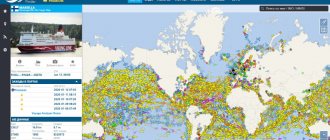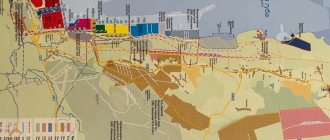Ocean is shaking
“Sea Port Portal” is a software package (KPS) based on the “single window” principle. The software product unites stevedores, sea carriers, state control authorities, allows transport workers to enter information about the vessel and goods into a unified information system, and allows supervisory agencies to process this information.
The introduction of KPS pursues good goals - reducing the time of transactions with goods in the maritime
checkpoint, reducing financial costs for interested market participants and end consumers of imported goods. However, at the moment, the innovation, according to entrepreneurs, needs to be improved.
“The work within the portal has been repeatedly discussed at various platforms,” Valery Tarasov, vice-president of the Kaliningrad Association of Agency and Forwarding Companies, shares information. — Representatives of sea carriers express the same opinion: for now this program for carriers is a burden that requires additional labor costs.
It is especially burdensome for representatives of container lines to work with the portal. They have to manually enter information about 400-500, and sometimes even a thousand containers into the system. At the same time, the transition to Kaliningrad by sea from the major ports of Eastern Europe, Gdansk and Klaipeda, takes four to six hours. This time is clearly not enough to update the data in the customs system. For comparison, containers from Rotterdam to the port of St. Petersburg take one or two days. And even such a period, as players in the St. Petersburg transport market note, is too short for forwarders, maritime agents and other participants in the process to have time to exchange information and verify information.
At the same time, the obligation to provide information on paper from transport workers is not removed. As Elena Bormotova, acting head of the customs post at the Kaliningrad Sea Port named after Khazov, explained, when processing arrivals, accompanying documents are often used, which are needed by fellow customs officers - services that deal with veterinary supervision, sanitary-quarantine and quarantine-phytosanitary control.
“According to current legislation, these documents must be provided in paper form to these services, sometimes with marks from customs authorities,” Elena Bormotova shares information. “That’s why today the electronic portal project lives in parallel with paper procedures.
In addition, ocean carriers already operating in certain language segments of electronic exchange are confused by the following fact. The electronic language used by representatives of lines and shipowners to communicate is not compatible with the format included in the base of the sea portal. At the same time, maritime agents are forced to enter information into five information systems of different government services.
“We hope that with the release of the order of the Russian government, we will see some progress, because government agencies will be interested in working together,” continues Valery Tarasov.
In the free port of Vladivostok, preliminary information on maritime transport using the Sea Port Portal CPS has already become mandatory since October 1, 2021. In the ports of the Northwestern Federal Authority, the customs information system is currently being tested in pilot mode. In the Kaliningrad region, a set of software tools is used at the customs post “Kaliningrad Sea Port named after Khazov”. Trial operation started last fall. According to Elena Bormotova, 337 court cases were filed electronically. The implementation of the portal at two other customs posts - at the sea checkpoints Baltiysk and Svetly should occur in the first half of 2021.
In the Baltic Customs, which includes the sea gate Big Port of St. Petersburg, the “Sea Port Portal” began operating in July 2021. By the end of September, customs officers processed nine preliminary information about goods and 184 packages of electronic documents and information about the vessel and cargo using the software product. 7 out of 46 shipping lines operating
those operating in the St. Petersburg port provide preliminary information to the KPS, reported the North-West Customs Administration.
Participants in foreign economic activity in the regions of the Northwestern Federal District fear that if the submission of preliminary information using the Seaport Portal CPS becomes mandatory in the ports of the North-West, even more man-hours will have to be spent crossing the border. The cost of maritime transport will increase, cargo owners and end consumers will suffer. An outflow of container cargo from Russian ports to the Baltic states and Finland cannot be ruled out. In general, the idea of introducing a software product that would simplify the procedure for registering ships and sea cargo certainly seems attractive to carriers. But the current information system needs to be improved taking into account the comments of business.
“There is a feeling that the existing model of electronic interaction is a kind of intermediate stage that should ultimately result in something,” says Galina Balandina, head of the Federal Center for Support of Foreign Economic Activity and Regional Development. — The question is: where is the optimal model that justifies the current additional costs of foreign trade participants? It seems to me that it would be right if the Federal Customs Service clarified to entrepreneurs that, for example, in three or four years their work will be transformed into a system that will allow them to get some advantages.
According to Elena Bormotova, the customs department pins its hopes on the new Customs Code of the Eurasian Economic Union. This document, which is currently being agreed upon by the EAEU member countries, should come into force next year.
— We recently received representatives of the Eurasian Economic Commission and discussed these issues with them. And we hope that the new Customs Code will create the legal basis for a complete transition to an electronic form of interaction with our other regulatory authorities,” emphasizes Elena Bormotova.
State Unitary Enterprise "Crimean Sea Ports" on the way to bankruptcy
On July 26, 2021, LLC "Dagestan Design, Survey and Scientific Research Institute of Maritime Transport" applied to the Arbitration Court of the Republic of Crimea with an application to recognize the State Unitary Enterprise of the Republic of Crimea "Crimean Sea Ports" as insolvent (bankrupt), as well as to approve the arbitration manager as a temporary manager from among the members of the Interregional Self-Regulatory Organization of Arbitration Managers.
In accordance with the Unified State Register of Legal Entities, the main activity is in the field of architecture, engineering surveys and technical consultations in these areas.
The authorized capital of this enterprise is 10 thousand rubles.
On September 16, 2021, Judge of the Arbitration Court of the Republic of Crimea N.N. Ilyichev issued a ruling to accept the application for proceedings and schedule a court hearing.
Krymelektromash JSC, which is one of the largest enterprises in Crimea for the sale of electrical, cable, lighting products, metal, equipment, and building materials, also entered the case as a creditor; has a reputation as a stable enterprise, an extensive network of clients, and a large production and technical base.
The authorized capital is much more significant, but the direction of activity is far from the maritime economic course.
The tax authorities, the Ministry of Transport of the Republic of Kazakhstan and the Council of Ministers of the Republic of Kazakhstan also got involved.
Thus, the problem that had been brewing since 2015 resulted in a court case regarding the bankruptcy of the State Unitary Enterprise “Crimean Sea Ports”.
The branches of this enterprise are: Evpatoria trade port, Yalta trade port, State Hydrography, Feodosia trade port, Kerch trade port.
These are the giants of the Crimean economy, which could provide full employment for the population with jobs.
In 2021, member of the Crimean parliament Irina Chernenko , speaking at a parliamentary session, reported: “Starting from October 2015, with the change of the leadership of the State Unitary Enterprise, the Crimean Sea Ports are systematically going down. The lack of a competent, balanced strategy for the preservation and development of Crimean Sea Ports has led to the fact that today the enterprise has all the signs of insolvency – bankruptcy.”
Also in 2021, the Minister of Economic Development of the Republic Andrei Melnikov commented on the situation: “Crimean ports will eventually be adapted for passenger transportation along the coast and the development of yacht marinas. From the point of view of a region that has a long coastline, this is an evolutionary path. Speed and the cost of transporting one passenger are important here. I am confident that within five years, the mode of passenger sea transport, at least on the southern coast of Crimea, will become commercially justified .”
According to the Concept for the development of port infrastructure of the Republic of Crimea until 2030, the functioning of seaports is largely due to the sanctions regime, which impedes their development. The concept proposes the development of yacht infrastructure, which involves the development of a comprehensive proposal for the development and improvement of the yacht infrastructure of the Crimean peninsula, as an integral part of the development of yachting tourism in the Russian Federation, through the effective use of natural, tourist and recreational potential, the creation of modern infrastructure in the form of yacht marinas and parking lots, including through ensuring conditions for attracting and effective investment of government and extra-budgetary investments with a development trend until 2030.
For example, to create a yacht marina in the waters of the former fishing port of Kerch, it is proposed to reconstruct existing berths suitable for receiving passenger ships and yachts of all classes; repair and construction of a new hydraulic structure, installation of a ship-lifting structure for launching, raising, and storing yachts and servicing them in the port territory; repurposing the port area for parking of small vessels and yachts of various classes, as well as parking of passenger and cruise ships, subject to the repair and construction of an appropriate berthing structure; zoning of port territories for specific purposes within a single concept, development of requirements for both architectural and functional solutions with the subsequent formation of proposals to investors.
The same fate awaits the rest of the Crimean ports, which are still part of the state enterprise.
Thus, Crimea will turn into a tourist paradise, where, as planned, marinas of all countries will moor?
It was not possible to extract from this Concept who will be involved in the extraction and processing of fish on a state scale.
Crimeans are concerned about the fate of the Crimean ports and are well aware that they may soon have a private owner, whose main task will be to make a profit in their own pocket.
The opinions of authors and speakers may not coincide with the position of the editors. The editorial position can only be voiced by the editor-in-chief or, as a last resort, by a person whom the editor-in-chief has specifically and publicly authorized.
"INFORMER"
Integrate “INFORMER” into your information flow if you want to receive prompt comments and news:
Subscribe to our channel in Yandex.Zen Add “INFORMER” to your sources in Yandex.News or News.Google We will also be glad to see you in our communities on VKontakte, Facebook, Twitter, Odnoklassniki
← Home
Next news →
Tuesday, November 9, 2021 14510







